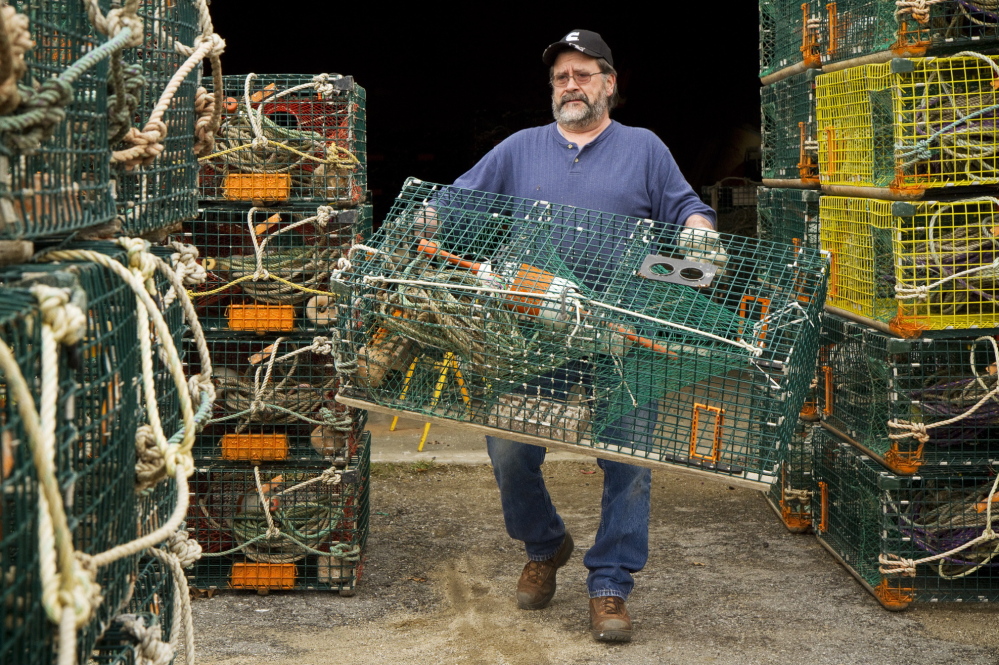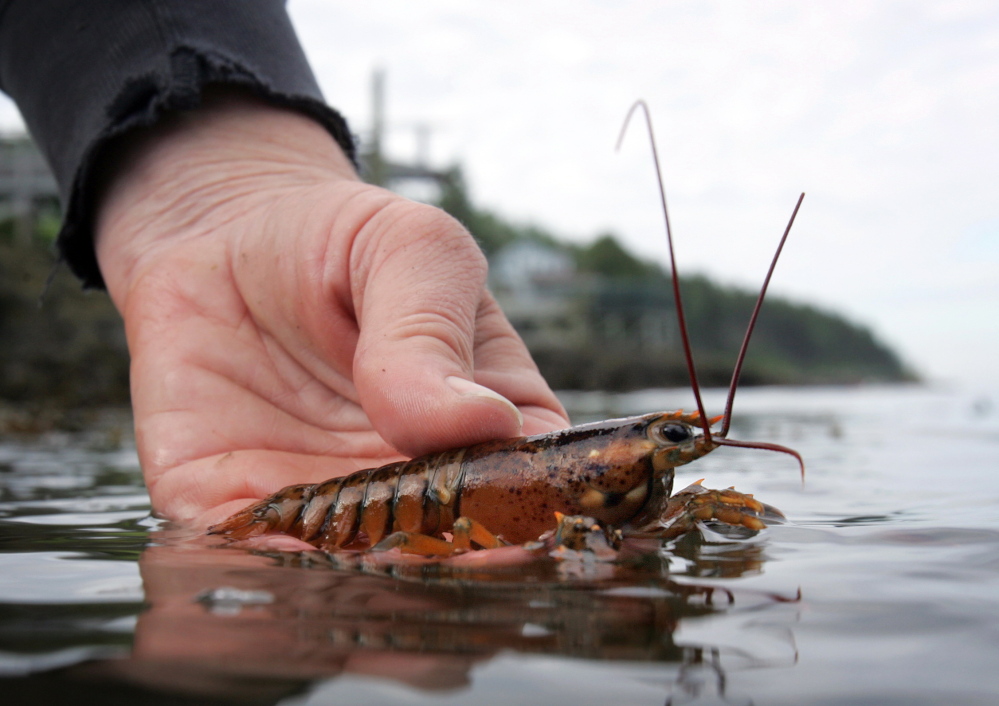Maine’s lobster industry, the state’s most lucrative fishery, may foresee shrinking harvests and higher market prices, but such changes are likely several years away, lobstermen and dealers said Wednesday.
An annual survey of young lobsters in 11 locations in the Gulf of Maine suggested that juvenile populations have fallen by more than half since 2007, according to research by the University of Maine. The American Lobster Settlement Index, compiled by a UMaine marine ecologist, is used as a predictor of trends in the fishery.
“The settlement index is not showing that the sky is falling. But it is an indication that there’s a decline down the road from this historic abundance,” said Jeff Nichols, spokesman for the state Department of Marine Resources. “It’s a good time for the industry to discuss how to adapt to change, but no specific measures are planned now.”
A declining population signifies a shift for Maine’s lobster industry, which has had record large harvests but declining market prices in recent years.
“A little less catch should help us a little on price,” said Wayne Parry, a lobsterman from Arundel. “It’s hard to tell how a huge reduction in catch would affect us. It’s three, four, five years down the road.”
Market prices have plunged in recent years because of a glut of lobster. The price per pound averaged $2.89 in 2013, up slightly from $2.69 in 2012 but down from as much as $4.63 a pound in 2005, according to the Department of Marine Resources.
Last year, nearly 126 million pounds of lobster, valued at $364.5 million, was harvested in the state. That catch was down slightly from the 127.2 million pounds caught in 2012, when the value of the harvest totaled $341.8 million.
By contrast, the lobster catch for 2005, when prices reached their peak, was 68.7 million pounds.
Lobstermen and dealers said Wednesday that they don’t expect the smaller juvenile lobster population to affect the market for several years. It takes about eight years for lobsters to grow to legal harvesting size.
“Nobody thought we’d be getting 125 million pounds forever,” said David Cousens, president of the Maine Lobstermen’s Association. “The impact looks like it’s four to five years away. People need to plan for it now, but it’s hard to do when you don’t know exactly what will happen.”
Nichols said the Atlantic States Marine Fisheries Commission, the federal fisheries management board for the eastern seaboard, would not take action to control Maine’s fishery unless the annual harvest dropped to 35 million pounds. The state would want to act before then, he said, but no trigger point has been set and no plan has been formed.
Any threat to Maine’s most lucrative seafood raises concern. Parry said several factors could affect the lobster harvest, such as migration patterns and fluctuations of water temperature.
The American Lobster Settlement Index tracks 11 areas in the Gulf of Maine, two in Canada and three in Massachusetts. A juvenile lobster settlement is a cluster of young lobsters that is growing on the ocean floor.
“We’ve seen there’s a correlation between juvenile populations and catch over time,” said Brendan Ready, co-owner of Ready Seafood in Portland. “Obviously, (the index) is a concern, but I’m not really scared.”
Ready said the lobster settlement studies are done close to shore and don’t account for any potential migration of lobsters offshore to deeper, colder water.
“We don’t have that data. There may be a shift to much stronger populations offshore,” Ready said.
The Department of Marine Resources held meetings along the coast this year to discuss the lobster settlement survey and other issues such as license latency, Nichols said. About one-third of Maine’s 6,000 licensed lobstermen don’t harvest lobsters, and state officials have raised concerns that those license holders could put pressure on the fishery if they resumed fishing.
Lobstermen said they have had several obstacles in recent years – higher prices for fuel, bait and licenses, and warmer water causing earlier-than-expected molting – so the warning signs of a population drop is just another burden.
“If you figure that prices will go up if supply falls, will they go up enough to offset getting half the catch? It’s not good news,” Cousens said. “This industry is fraught with problems, and this is just the latest issue.”
Jessica Hall can be contacted at 791-6316 or at:
jhall@pressherald.com
Twitter: @JessicaHallPPH
Send questions/comments to the editors.




Comments are no longer available on this story